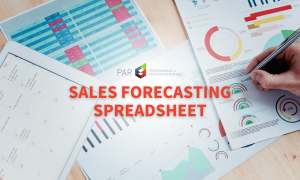4 Tips to Focus Your Forecasting

Our lives are made up of forecasting – and while planning doesn’t eliminate uncertainties, it does help us prepare for them.
We check the weather report before scheduling an outdoor lunch. We shift our workouts to the morning after weeks of skipping them in the afternoon. We seek out new professional skills when we want to make ourselves more marketable.
And in sales, we forecast the year ahead to set and track realistic revenue goals.
Forecasting helps our associations plan for growth. We can expand our teams and develop new programs when we reach our revenue targets. Or we can scale back and adapt product offerings when it’s clear we are falling short. And when economic uncertainty appears, forecasting helps our business development teams regain control.
“All the things we used to lean on – the consistency of reaching customers at a certain time period, the consistency of them at the same level of investment, the products, the way we work with teams – all of that is beginning to change and take a new direction,” says Sean Soth, Leadership Advisory Board Chair for the Professionals for Association Revenue.
Whether your team is already forecasting or needs a reset, here are four ways to focus your forecast.
1. Identify the current performance for all products.
Identify all revenue-generating products in your portfolio and begin tracking the numbers for each category. Be as specific as possible. Instead of identifying your overall advertising performance, break it into each channel of media (print, website, e-news, etc).
“Every sales meeting should begin by identifying these numbers and it should be something we come back to regularly,” says Soth.
2. Identify products sold the year (or two) before.
Accurate forecasting begins by understanding the history of our products. It helps our teams understand where to adjust and draws our attention to any risk factors such as underperforming digital metrics or changing market forces within a specific vertical.
Additionally, take time to consider the effort that goes into selling each product. If a product demands a lot of time and resources but generates minimal revenue, work to adapt or eliminate the product all together.
3. Note the number of customers who purchased each product.
Understanding how many customers are contributing to a product’s revenue helps you assess its overall transactional health. Are a few customers generating most of the product’s revenue or do you have a diversified customer base? Diversification is important, but also consider the amount of revenue generated by your largest customers.
“You need diversification of customers and smaller customers that you can develop into bigger ones, but it’s important to recognize the effort you are putting in and that. There are only a certain number of customers that are going to give you most of your revenue,” says Tom Egan, VP of Industry Services for the Association of Packaging and Processing (PMMI).
4. Balance renewals with new clients.
If a large chunk of your business comes from renewals, you may feel confident in an established customer base. While your forecast should reflect these returning client spends, also take into consideration how you can grow sales through targeted efforts to reach new clients. Grow renewal investments with specialized packaging and product launches.
Download PAR's Forecasting Spreadsheet! This download is accessible to all PAR members.
